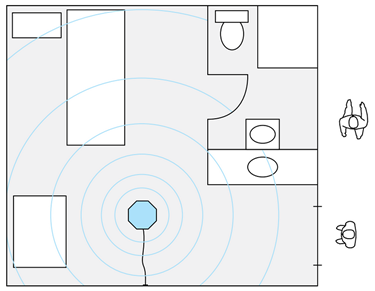Technology Overview
The UVC Basics
Most common cleaning agents use chemicals to inactivate bacteria and viruses on surfaces. UVC inactivates microorganisms by absorption of radiated electro magnetic energy which causes a photochemical reaction that alters the molecular components essential to cell function. The light energy penetrates the cell wall causing pyrimidine molecules such as thymine in the DNA to cross link forming a dimer. A dimer impedes the nucleic acids functions and prevents the organisms ability to continue cell metabolism, resulting in cell death. The DNA and RNA carry genetic information necessary for reproduction; therefore, damage to either of these substances can effectively sterilize the organism. (Snider et al., 1991)
Cleaning with chemical solutions alone is insufficient in today’s health care facilities. Chemicals do a great job at killing bacteria and viruses but they are dependent on the people that apply them and the contact surfaces they are applied to. UVC treatments are a secondary process to ensure that no areas are missed in the cleaning operation. High touch areas like electronic equipment in hospitals or laboratories are difficult to spray down with bleach. UVC energy contacts all the exposed surfaces including the hard to get places.
Intelligent Dosage Technology
UVC Cleaning Systems eliminates the human error that is inherent to timer based UVC disinfection systems and treats each room as a unique space. We use a multi faceted UVC measuring process to determine the length of a treatment for a given area. External sensors measure the energy created by each device. This accumulated measurement of the UVC flux field is one of the factors in determining dosage per treatment area. The second factor is the emitter efficiency, which is measured with internal sensors.
UVC emitters vary in output depending on emitter life cycle, available voltage, and operating temperature. It is the combination of these three variables that determine the dosage per treatment area. Our algorithm and measurement data has been proven against biological samples in certified antimicrobial laboratories.

